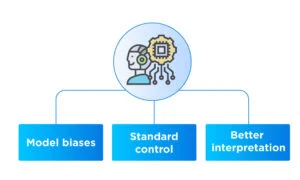Every project or advancement has an initial and actual idea, depending on which developers construct appropriate products. In machine learning, there are certain primary ideas or data that help establish specific models, and we often know them as ground truth. It is nothing but the real idea or actual data based on which distinctive algorithms are built.
The ground or definitive truth is applicable in multiple areas apart from ML, such as robotics, healthcare, geospatial science, finance, education, governmental initiatives, and others. Having an initial idea helps in determining goals for a project, making it easier to enhance accuracy and impact.
In this blog, we shall discuss the ground truth in machine learning alongside contemplating its importance and benefits.
What is Ground Truth in Machine Learning?
Ground truth is nothing except some real information that plays the role of a fundamental component while executing a plan. Such an approach in ML is the actual data and correct input based on which models are trained and evaluated. It is the primary stage that sets standards for a model's performance. Developers build their model according to the foundational idea, bringing efficiency to it.
The process denotes that each development starts with some foundational idea that supports its gradual evolution and performance enhancement. Factual data contributes to initiating an idea, planning it, and executing the same.
In machine learning, factual data is essential to establish models as it not only inspires model formation but also sets the benchmark to evaluate its performance after deployment. Therefore, it is also important to assess the alignment of the primary idea and the ultimate outcome of an ML model. If there is any gap between the two, there is a chance of model inaccuracy, which will impact its performance significantly.
Types of Ground Ideas in Machine Learning:
There are three broad types of ground ideas or facts that are applicable to the establishment and evaluation of machine learning models: instant, delayed, and absent ground truth.
Instant ground truth: Here, the primary idea is easily and instantly accessible. Once a model completes a task, its ground fact is instantly available to estimate its performance.
Delayed ground truth: In this segment, access to the ground fact is delayed when assessing the performance of an ML model.
Absent ground truth: This category defines a situation when there is no access to the ground truth. In simple terms, the initial idea is absent, which is mostly observable in automation procedures.
Importance of Ground Truth in Machine Learning:
Ground data or truth is a basic requirement for model establishment in machine learning. It is set chiefly at the beginning of the model formation to get assistance in training and evaluating the same.
Through gradual training, when the model is practically deployed, the ground fact plays the role of a set benchmark to estimate the overall performance. Here, the ground data offers several opportunities to accelerate model output, such as:
Model biases: Bias is very common in ML models as they highly depend on historical and third-party data. Having foundational and actual data can be advantageous to identify and eliminate bias.
Standard control: Biasness and stereotypical elements in ML models impact its performance. By limiting such elements, ground truth initiates standard control management, boosting reliability.
Better interpretation: It is essential for ML models to have advanced interpretability abilities that also contribute to appropriate decision-making. The ground idea helps in attaining better interpretative skills in this regard.
Benefits of Ground Fact:
Personalization: While implemented in e-commerce and OTT platforms, ML models need to assess customers and viewers while offering an audience-centric experience. For this purpose, ground data assesses specific data to add capabilities for personalization in ML algorithms.
Higher efficiency: Ground ideas establish benchmarks and standards of ML algorithms, which define how they should perform and what goals they need to meet. This approach assists in bringing efficiency to ML models.
Summing Up!
Ground truth is a label that is usually incorporated with the primary data or idea while formulating ML models. Therefore, we can say that such elements are very crucial to determine the appropriate development and effective performance of models.
Click here and get in-depth insights on the latest tech trends and practices.
Read More:
The Role of Machine Learning in Deepfake
Microservices and Containerization: Key Concepts and Differences






